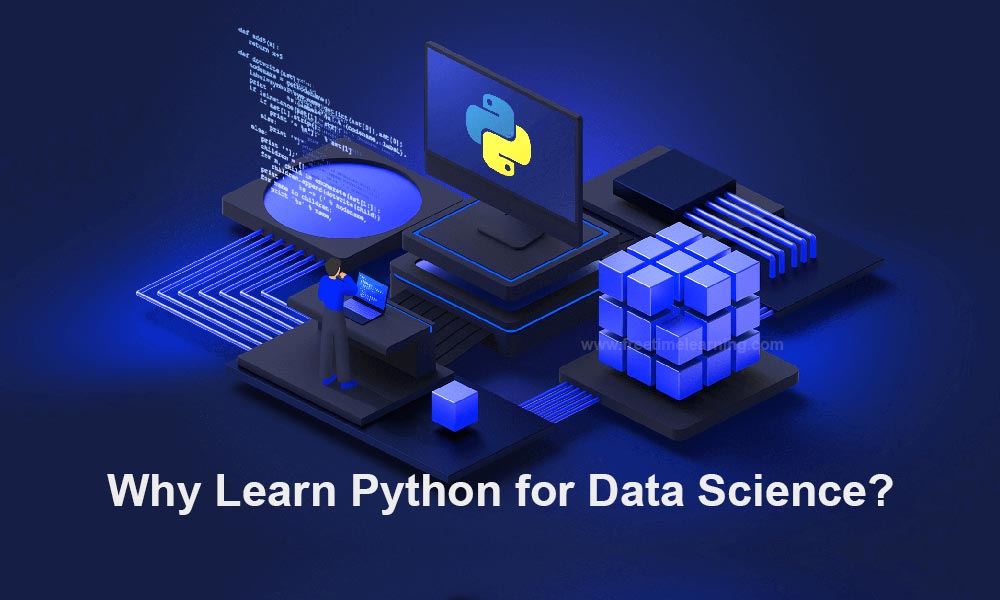Advantages of Learning Python for Data Science
The advantages of learning Python for data science are numerous, and it’s not hard to see why so many businesses, individuals, and organizations are turning to it as the language of choice. Python is a versatile, powerful language that can be used in a variety of contexts and applications, from scientific research to web development. For data science projects, Python offers several key advantages that make it an ideal choice.
One advantage of Python is its scalability. It’s easy to scale up or down your data project depending on the size and complexity of the task. Additionally, Python is highly readable, so you can quickly understand code written by other data scientists. This makes sharing and collaboration easier, especially in groups with mixed skillsets.
Python also makes dealing with complex datasets easier because the language offers comprehensive libraries dedicated to the manipulation and visualization of data such as Pandas and Matplotlib. Along with these libraries come easy-to-use syntax which can help simplify complex tasks that would otherwise be daunting for a beginner programmer.
Another major advantage of using Python for data science is its speed in comparison to other languages such as R or MATLAB. With its built-in tools for numerical analysis, high performance computing (HPC), and machine learning techniques, Python is incredibly efficient at processing large datasets quickly – perfect for crunching numbers in real time when speed matters.
Finally, because the language is open source there’s no cost involved with getting started with data science projects using Python – meaning anyone can start learning today without worrying about expensive investments or licensing fees associated with traditional programming languages like Java or C++. This makes it an attractive option for all types of users looking to get into data science experimentation, regardless of budget or experience level.
Data Structures and Algorithms
Data Structures and Algorithms are two of the most important concepts in computer science that form the foundation for problem solving and designing software applications. Data structures define the way in which data is organized and stored, while algorithms provide a set of instructions that can be used to manipulate and modify data. Data Structures and Algorithms are closely related to each other, with one being used to store information while the other is used to process that information.
When it comes to Python, there are several different data structures available for organizing and storing data. The most common data structure in Python is the List, which is an ordered collection of elements. This allows users to store all sorts of information in a single place. There are also other popular data structures such as Dictionaries, Tuples, Sets, and even more complex ones such as Trees and Graphs. Each has its own advantages so it’s important to choose the right structure based on your specific needs.
In addition to various data structures, Python also provides access to several algorithms which can be used for manipulating or modifying existing data or processing new information. Common algorithms in Python include sorting a list of numbers into ascending or descending order, searching for particular items within a list or dictionary, reversing a string or sequence of numbers/characters, calculating statistical models such as linear regression models and machine learning algorithms like Naive Bayes classification or Random Forest decision trees.
Moreover, Python includes some specialized libraries just for dealing with data structures and algorithms like NumPy – a library used primarily for scientific computing with multi-dimensional arrays; SciPy – a library mostly focused on linear algebra operations; scikit-learn – a library providing implementations of machine learning algorithms; pandas –a library providing easy manipulation of tabular data with built-in plotting capabilities; matplotlib –a library for creating visualizations from numerical data; TensorFlow - Google’s open source platform dedicated to deep learning research; Keras -a high-level python API wrapper around popular deep learning libraries such as CNTK & Theano; etc. With these libraries slowly growing in popularity they offer easier access to building powerful models quickly by abstracting away the complexity involved in setting up code from scratch every time you want to run an algorithm.
Overall, understanding Data Structures & Algorithms as well as having knowledge on various Python libraries makes developing efficient solutions easier when it comes to using Python for Data Science applications. With enough practice & exposure over time any user can become proficient at using both concepts together thus making it very rewarding in advancing your career within the field of Data Science.
